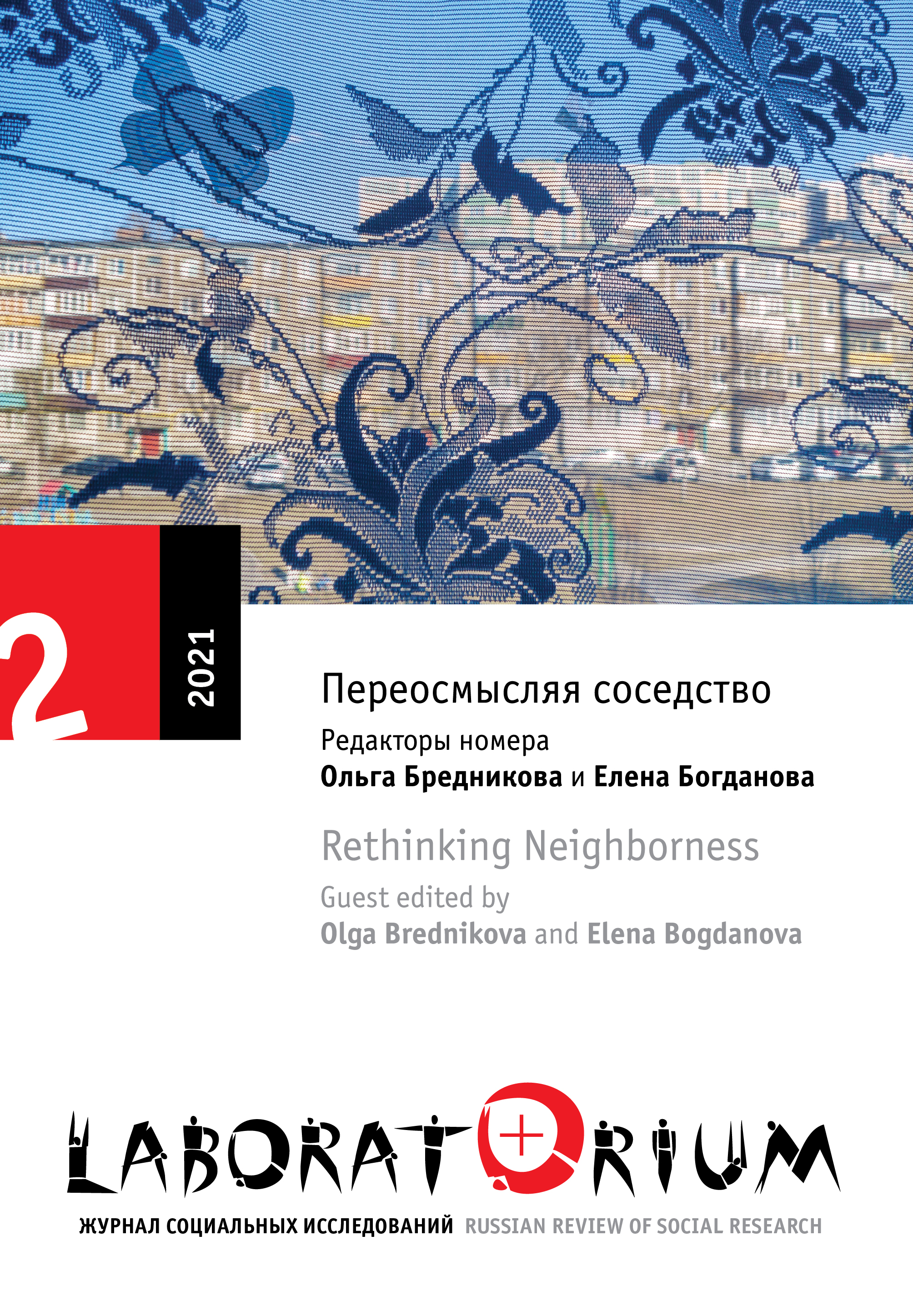How Can Neighborhood Be Understood and Studied?
Main Article Content
Abstract
This essay presents a review of classical and modern approaches to the study of residential neighborhoods. Its main goal is to help researchers of urban neighborhoods in Russia to develop their theoretical frameworks and conceptual apparatus that would allow to study neighborhoods as a phenomenon undergoing significant changes to its structure and its agents. We present a number of goals, the first of which is to identify the main ”entry points” into the study of neighborhood. Neighborhood is considered from the perspective of collective action, new materiality, everyday interactions, and multiagency. Addressing the second task, we reveal the diversity and dynamism of the understanding of neighborhood that are a result of the ongoing debates in scholarship and of varied sociocultural conditions, paying special attention to the context of contemporary Russia. A review of approaches to the study of neighborhoods allows us to determine the specifics of modern residential neighborhoods that exist in Russian cities. Instead of the widespread concept of ”neighborhood,” focused on the territorial and social community, as well as the group nature of relations among neighbors, we propose to use the concept of ”neighboring,” more focused on individual experience and practice of building interpersonal interactions. In the development of neighborly relations in Russia, we distinguish three stages: “forced neighborhood” specific to of the post-Soviet period, “controlled distant neighborhood” of the 1990s–early 2000s, and “controlled diversified neighborhood” that began to manifest itself in the 2010s. As our third task, we formulate the main conceptual aspects of contemporary understanding and study of the phenomenon of residential neighborhood. The current debate in this field of study moves away from the close connection between the concepts of neighborhood and community and proposes to focus on individual actors who set in motion the sociability of the neighborhood, produce multiple practices and scenarios, and purposefully engage in building the neighboring as the main unit of neighborhood relations. In the understanding and study of the neighborhood the hermeneutic approach, dealing with complex, multiple, changing, constantly reassembling relationships, begins to dominate.
Text in Russian
Keywords
Neighborhood, Approaches to Investigation of Neighborhood, Neighboring, Community, Agency, City, Everyday Life, Multiplicities, Scenarios
Abstract 386 | PDF (Русский) Downloads 406


